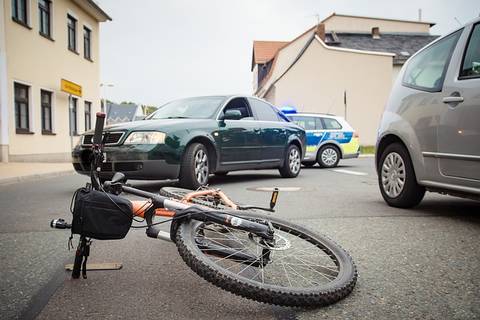Have you ever looked into biking, only to find that there was something called a “fixed gear bike?” This type of bicycle has gotten popular over the past few years for its unique design—it doesn’t have brakes.
But why? In this blog post, we’ll explore fixed gear bikes or fixie and why they don’t include brakes as an integral part of their construction.
From the best way to stop these bikes in order to stay safe on your next ride, to understanding the physics behind it all, you’ll end up with a thorough appreciation of these mysterious creations known as “fixies.”
So let’s start pedaling!
Quick Answer
Traditionally fixed gear bikes have no brakes on them because they are used for competitive bike race. Image what will happen if a person upfront suddenly applies brakes in the middle of race event? It would be dangerous as probably you and everyone behind will crash into each other. Then their is the pursuit of minimalism and simplicity as some of the reasons why these bikes don’t have brakes.
What Is A Fixed Gear Bike Or Fixie?
A fixed-gear or fixie bike is a type of single speed bike that has no freewheel mechanism. This means you cannot coast and your pedal moves as long as the wheel is moving.
Being one of the oldest bike types, it is probably the forefather of all bike types present today. Here the absence of the ball bearing disallows wheels to turn on the cog.
A fixie bike is fun to ride, looks slick and nice, robust in design, lightweight, maintenance-free and more efficient. This means you get faster speed for the amount of effort put in.
These bikes are idle for lower body exercise, endurance training, racing, and daily commute. Most like by riders who want a lightweight bike with no-nonsense riding requirements.
While most fixies are just a basic mechanical device with one fixed gear. Many brands come with brakes included and flip-flop hub; to switch between fixed gear and freewheel.
Since this bike does not have a freewheel and does not cog; you can do many interesting things with this bike. For example, it can be run backward, can do bar spin and 180 bunny hop.
Why Do Fixies Have No Brakes?
The roots of the fixed-gear bike extend far into the world of bike racing. Developed for competition in velodrome tracks, such as Encino Velodrome, this type of cycle had no need for a brake because slowing down on track is unnecessary and unsafe.
With riders regularly traveling close to one another at high speed, any sudden stoppage could cause a severe accident. Image what will happen if a person upfront suddenly applies brakes in the middle of race event?
Instead, racers rely on the quick coasting ability of the bike to navigate around other cyclists and obstacles.
Taking from its past in racing, many cyclists and even bike manufacturer’s have modified the original design of the track bike to create fixed-gear bikes fit for city streets.
Durable and lightweight – all while maintaining their distinct lack of brakes – fixed gear cycles have proven to be an increasingly popular choice among urban commuters.
But this does not mean all fixed gear bikes do not have brakes. Today cyclist can choose between the traditional bike design with no brakes, or fixed-gear bike with either a front or both front and rear brakes.

Why Would Anyone Ride a Bike Without a Brake?
Riding a bike without brakes is an exercise in trust, balance, and control.
Those who choose to test their mettle in this manner value the sensation of having complete control over the movement of their vehicle, as well as reducing the level of physical accessories necessary to ride.
This minimalist approach is reflected in both the aesthetic appeal of a fixie bike and the philosophical thought that oftentimes comes with stripping down to only what is truly required for getting from point A to point B.
For those looking for something beyond traditional bicycle infrastructure and design, choosing not to opt for brakes can be seen as a stunning statement — one which can almost be considered cool due to its daring nature.
Riding a bike without brakes takes skill and a certain degree of daring. Those that put themselves into this situation experience an adrenaline rush unlike anything else.
It’s the thrill of potentially losing control at any second due to unexpected turns, bumps in the road or other obstacles in their way. But those who can react quickly with whip skidding, bailing or rapid turning will gain confidence and satisfaction from mastering difficult riding.
It is not for everyone, but for those who can handle it, a bike without brakes provides amazing rewards.
Why Are Fixies So Popular?
Used for so many years it was the hippies that made this cool and popular. That is why it is sometimes also called a trendy hipster bike. Fixies come from sports and first adopted by the bike-messengers.
They were mostly adopted by these bike messengers for their convenience and low maintenance. later hipsters adopt them for its slick design, classic look and ability to perform different stunts.
It has been part of various cultures like that of bike messenger culture, hipsterism, and modern urban culture. They all kind of blend in together forming a new subculture of fixed gear biking.
In modern times it is liked by most fitness buffs because of its ability to boost results of bicycle workouts. Road riders like it because of its customization, comfort, control, and simplicity.
I personally like my fixie for its low maintenance needs. You just need to keep your tires in good condition; that’s it! Other than that it has a retro feel and helps develop a smooth pedaling style.

Is It Illegal To Ride A Bike Without Brakes?
Riding a bicycle without brakes can be dangerous, so many countries and states have laws against it.
In the United States, states like California, New York, Delaware, Florida and Texas all have laws prohibiting riding bikes without brakes.
Across Europe too such a practice is generally prohibited as most countries require bicycles to be equipped with brakes. This includes Denmark, France, Germany, Austria, Belgium, Poland, Spain Italy and Holland.
On the other hand, there are countries like Australia which on one hand do not restrict one to ride a fixie without brakes but fine companies which sell them without brakes.
These restrictions are put in place to protect both cyclists and pedestrians alike from any potential accidents that may arise from riding brakeless bikes in public areas.
Furthermore, violating the rules about having brakes may result in additional fines or even criminal charges depending on different jurisdictions. Therefore it is always best to check your local regulations to ensure that your bike meets all requirements before going out for a ride.
Luckily you can comply with these rules by installing brakes on your bike. It’s easy and there is always a ton of helpful articles and youtube video to help. I have installed a front brake for $50 from a local bike shop.
How To Apply Brake On A Fixe Bike
Well, you just learned why many fixies came with brakes preinstalled. But what if it doesn’t; how will you apply brakes on a fixie? Good news stoping a fixed gear bike is easy to do.
You just need to use your peddle, weight and legs to stop your bikes. A fixie without a front brake can be stoped by four ways; the skid stop, slip stop technique, back peddle/backpressure and a typical rear hand brake.
The simplest of them is applying the rear hand brake followed by skid technique, back peddle and slip stop. Skid stops can be done with or without any form of foot retention, but for the other two, you need one.
For skid stops, you need to lift a little from the saddle bending forward and lock pedals to their position. Now as you stop pedaling the rear wheel stops and skid till the front one stops.
In back peddle you need to restrict the wheel motion by applying a little backpressure. You basically put pressure with your legs against the forward momentum of the bike and peddle.
For the slip stop technique, you need to have a little experience with fixies. Just raise on your seat bending forward as to lift the back wheel in the air. Once the back wheel raise about the ground apply a quick back peddle and your fixie will stop.
I believe no matter if it is required by law or not; one should always have an additional hand brake installed when used on road, especially when he or she is a beginner.
Should I Ride With or Without Brakes?
When it comes to fixie bikes, deciding whether or not to ride with brakes can be a difficult decision.
Some cyclists prefer the simplicity of riding without them – forgoing the hassle of having an extra piece of equipment on their bike. Others enjoy the responsiveness that braking offers and feel safer as a result.
Ultimately, deciding to ride with or without brakes can be an important safety consideration.
For some, opting for a fixie without brakes is the preferred option as riding without them allows for easier and more responsive stopping when needed.
However, cycling with a brakeless bike can be dangerous, particularly in conditions of reduced visibility or wet roads. Having brakes allows for increased control and safety in uncertain road conditions.
Ultimately, choosing between a brakeless or braked fixie should come down to what feels most comfortable for you, your level of proficiency as a cyclist, and the type of terrain you will likely be navigating.
Also Read,
How Heavy Is A Lightweight Bike? | Get List









Thank you for sharing